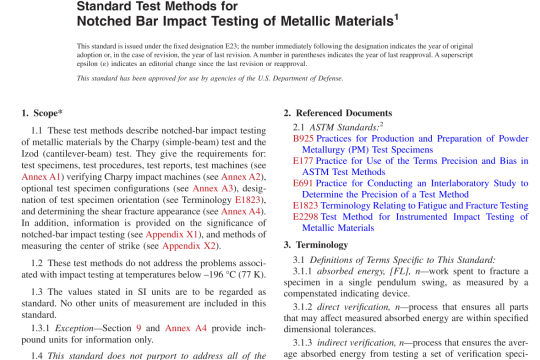ASTM F842-2017 pdf free download
ASTM F842-2017 pdf free download.Standard Test Methods for Measuring the Forced Entry Resistance of Sliding Door Assemblies, Excluding Glazing Impact
1. Scope
1.1 These test methods determine the ability of sliding door assemblies to restrain, delay, or frustrate forced entry. 1.2 For purposes of these test methods, sliding door assem- blies are defined as described in 1.2.1 – 1.2.4 and as shown in Fig. 1. Sliding door assemblies with a combination of operable panels and fixed panels (lites) shall be classified and tested separately for each type. 1.2.1 Type A—A sliding door assembly which incorporates one or more sliding panels that lock to the jamb. 1.2.2 Type B—A sliding door assembly which incorporates one or more sliding panels that lock to an intermediate jamb. 1.2.3 Type C—A sliding door assembly which incorporates one or more sliding panels that abut and lock to other panels. 1.2.4 Type D—A sliding door assembly which incorporates one or more fixed or stationary panels that are designed not to open. N OTE 1—See Fig. 1 for graphic depiction of sliding door assembly types. 1.3 The values stated in inch-pound units are to be regarded as standard. The values given in parentheses are mathematical conversions to SI units that are provided for information only and are not considered standard. 1.4 This standard does not purport to address all of the safety concerns, if any, associated with its use. It is the responsibility of the user of this standard to establish appro- priate safety, health, and environmental practices and deter- mine the applicability ofregulatory limitations prior to use. 1.5 This international standard was developed in accor- dance with internationally recognized principles on standard- ization established in the Decision on Principles for the Development of International Standards, Guides and Recom- mendations issued by the World Trade Organization Technical Barriers to Trade (TBT) Committee.
5. Significance and Use
5.1 These test methods are intended to establish a measure of resistance for sliding door assemblies subjected to attacks (other than impacting glazing materials) by unskilled or opportunistic burglars. Resistance to higher levels of force generated by skilled burglary attack requires methods, such as alarms, communication, or apprehension systems, or special security glazing materials more sophisticated than those evalu- ated by these test methods. Technicians performing the test should understand the intent of this test method and should be trained on the execution and pass/fail criteria. 5.2 Entry through a sliding door assembly can be accom- plished by impacting or removing glazing materials. This method does not evaluate glazing materials for breakage or de-glazing. Other standards must be used to evaluate forced entry by impacting or removing glazing. 5.3 Acceptance criteria for performance levels are a matter for authorities having specific jurisdiction to establish. Sug- gested guidelines are found in Annex A1.
6. Test Criteria
6.1 Sliding Door Test Specimen—The same sliding door assembly shall be used for all testing and shall contain panels having the greatest height and width for which approval is sought. Each unique panel/frame arrangement and locking arrangement shall be tested. 6.1.1 The construction of the sliding door test specimen, including all hardware, components, and arrangement ofpanels shall be representative of that for which acceptance is desired. 6.1.2 The sliding door test specimen shall consist of the entire assembled unit, including frame, glazing, and anchorage as supplied by the manufacturer for installation in the building. 6.1.3 Unless otherwise specified, the test specimen shall contain the weakest code compliant safety glazing for testing and shall be single glazed if designed for either single or double glazing, or double glazed if designed exclusively for multiple glazing. Products tested with glazing materials other than the weakest code compliant safety glazing shall qualify only the specific glazing material tested. 6.1.4 Sliding door assemblies tested with more than one locking device shall not qualify sliding door assemblies with fewer locking devices, regardless of size. 6.2 Performance Criteria—The performance level is at- tained if all locking devices remain engaged and entry cannot be gained during the test or upon removal of loads. If during testing, any component, including the glazing material, fails, allowing entry, this shall be considered a failure to attain the performance level. Glazing which breaks, but does not allow entry, shall not be considered a failure to attain the perfor- mance level.




